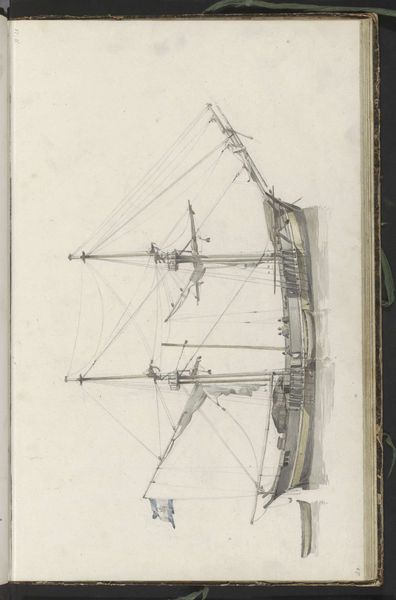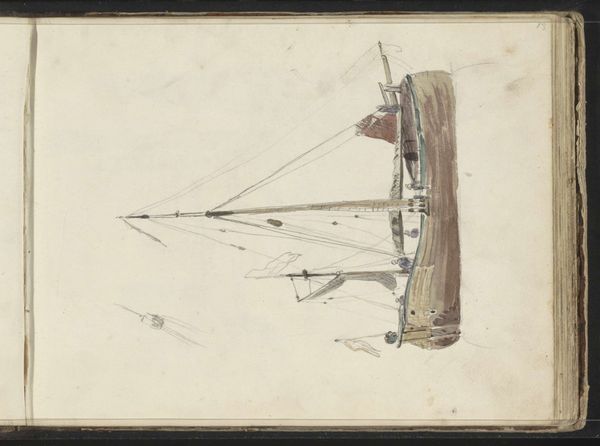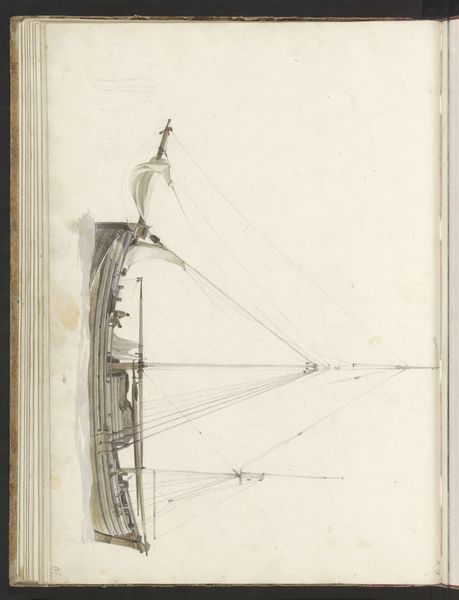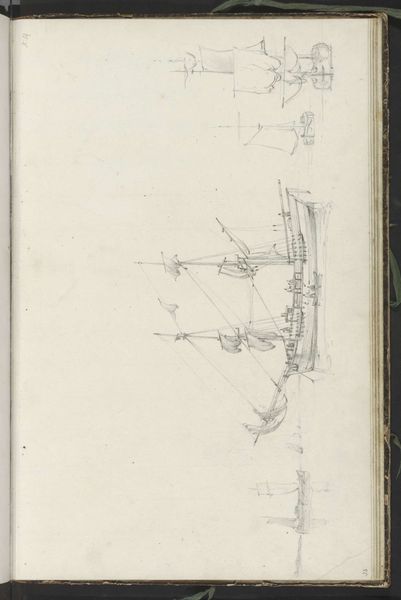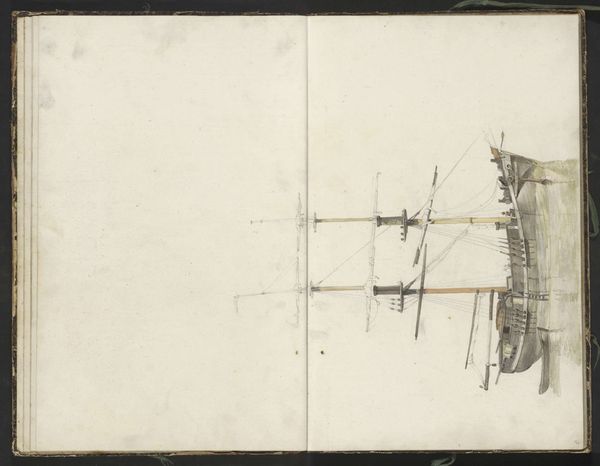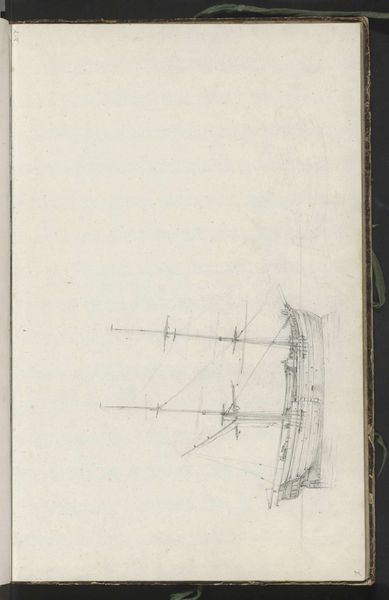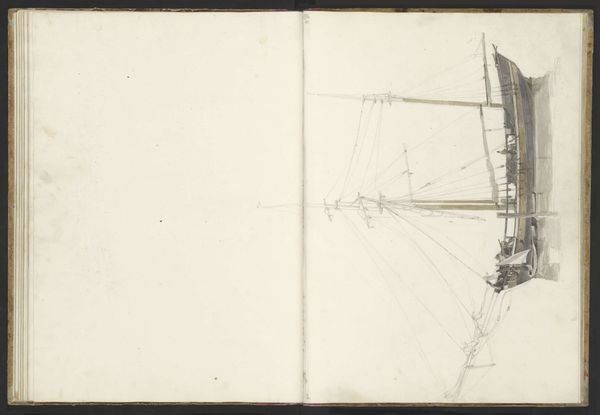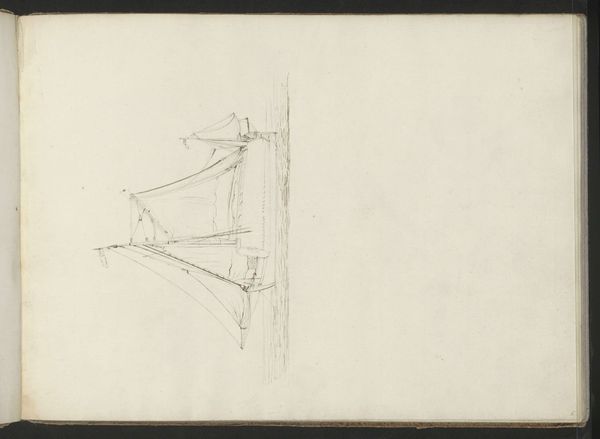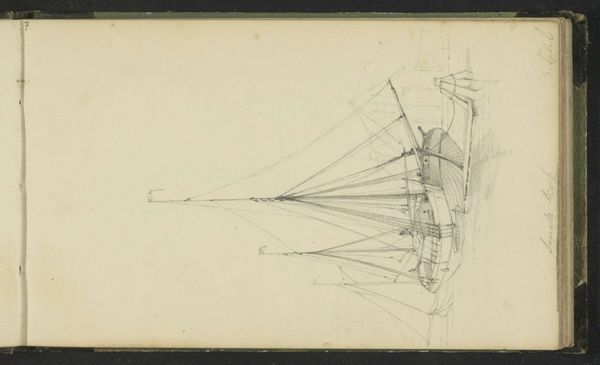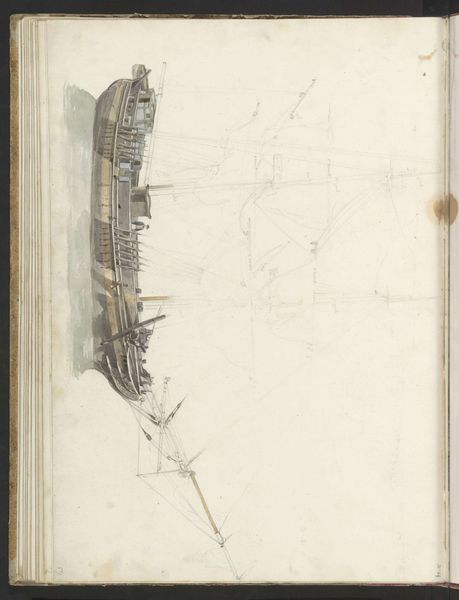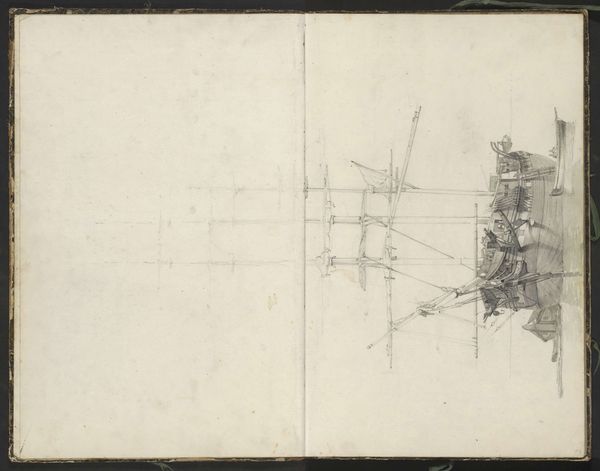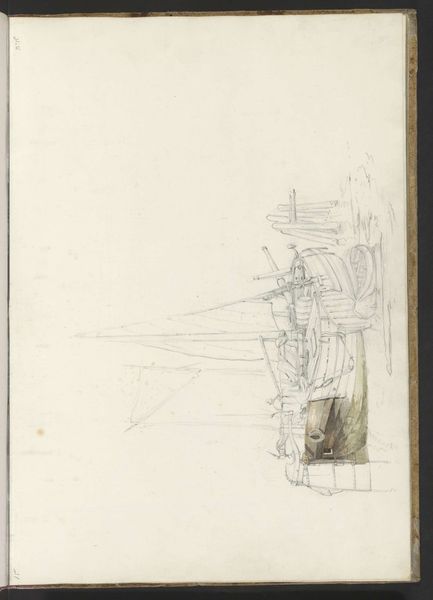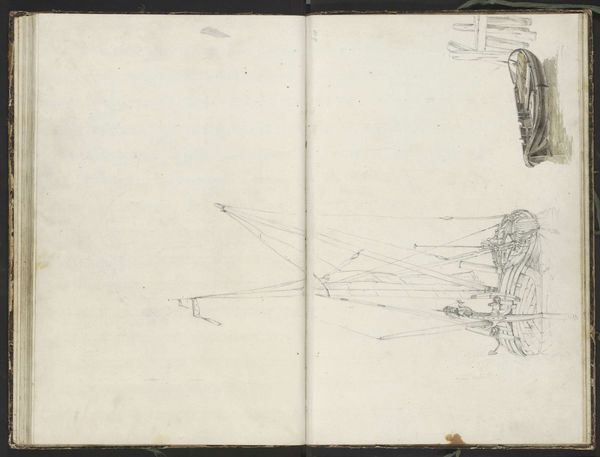
drawing, paper, watercolor
#
drawing
#
landscape
#
paper
#
watercolor
#
romanticism
#
watercolor
Copyright: Rijks Museum: Open Domain
Curator: Before us we have "Zeilboot," or "Sailboat," a drawing by Johannes Christiaan Schotel, created sometime between 1797 and 1838. It’s a delicate piece, rendered in watercolor on paper, characteristic of the Romantic landscape tradition. Editor: Ah, it has such an unfinished feel. It's the visual equivalent of catching someone mid-thought. Like a dream fading at dawn... Curator: That sense of incompletion is really interesting. We need to understand 19th-century Dutch maritime culture. This era was shaped by colonialism, and by global trade routes. Schotel's art reflects that culture, but it doesn’t shy away from its problems and contradictions. We have to consider the historical power structures at play in these portrayals of the sea. Editor: Absolutely, yes, those undercurrents. But on first look, there's something incredibly hopeful and almost naive about it, don’t you think? All those open, airy lines— the sails reaching for something bigger than the page allows. Is that naive or optimistic, hmmm? It also captures a feeling of movement; that this boat, even suspended mid-sketch, will sail off at any moment. Curator: It evokes movement, yes, but who does this movement serve? Whose freedom is represented by the vessel and its travels? When discussing "maritime paintings" like these, one must unpack themes of imperialism, of exploited labor, and displaced peoples... These were vessels of trade but they were also involved in conflict and exploitation. Editor: A very necessary reframing, to be sure. But can't it also simply be... pretty? A floating poem on paper? We feel drawn toward beauty and our own feelings. A pause in all that seriousness lets people see the bigger picture maybe, no? Curator: But beauty is always in context. Who gets to determine what is considered beautiful, and whose narratives are obscured by aesthetic appreciation? Art challenges viewers to understand the intertwined historical context, not simply aesthetics. Editor: Touché. It’s those complexities, isn’t it, those layered narratives, which make this more than just a sailboat on paper, after all. Curator: Precisely. Let's not be swept away only by the "pretty." We must also recognize the larger, more complicated reality in which these works were created, or the history we risk to repeat, or forget.
Comments
No comments
Be the first to comment and join the conversation on the ultimate creative platform.
